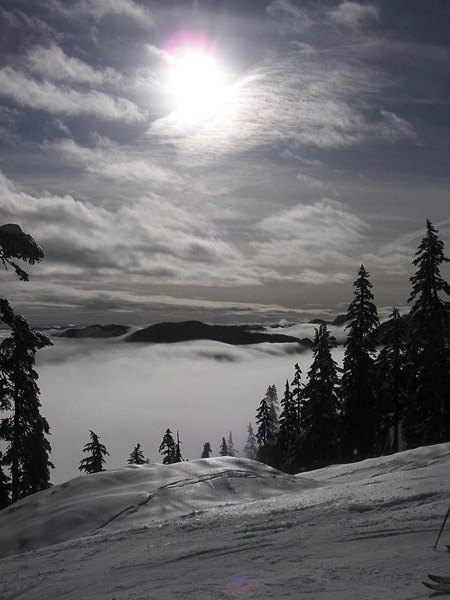I’ve been thinking about something, and around my home I’m told that is usually a dangerous proposition.
Nevertheless, I’ve been musing about risk versus reward in mountain sports, which became quite topical a few weeks ago. You would have to have been hiding under a rock not to know that four snow sports enthusiasts died on Feb. 19 right up there in the Cascades, victims of avalanches.
When something like this happens, and of course it does every year, I often hear the comment, “Well, at least they died doing what they loved.” And that is what I’ve been thinking about: does that make it acceptable? If so, how does that work exactly?
Back in the days when I was a pilot, I was told the secret to being an excellent aviator. You start out with an empty bag of skill and a full bag of luck, and the trick is to fill up the bag of skill before you empty the bag of luck. Likewise, in high risk sports practiced in the mountains, skill is essential, but if push comes to shove, luck trumps skill almost every time.
Just like one key to a happy life is to pick your parents well, similarly a key to a happy skiing or boarding experience is to make good choices. But knowing how to make those choices is the hard part, isn’t it? Do you go down a difficult run only because a friend teases you? Do you ride your board faster down the mountain than the poor visibility really calls for? That’s when I think about that risk-reward equation and all the variables, some controllable and some not.
The three people killed by avalanche at Stevens Pass (the fourth was killed at Alpental) were being careful, they were wearing beacons and avalungs, and carrying all the right gear. They had stopped in a group of trees, skiing from point to point, one at time. But following all the proper procedures only lessened the risk; it didn’t eliminate it.
In the investment world, they tell you that conservative returns should have low risk, and that buying dot.com stock is high risk. If the projected return seems too good to be real, it probably is. That kind of thinking should be used in the mountains.
I love mountain sports, I love the feeling of breathing cold, clean air while battling gravity going down a powder run, I love sharing solitude while still being with friends. I love a beautiful day in the spring, the kind where the sun glints off the snow and almost mesmerizes you. It can be a temptation worthy of Icarus, and one every experienced skier seeks.
But I don’t think any one day in the mountains is worth dying for. You don’t have to emulate all those Warren Miller movie heroes, jumping off cliffs in the maddening search for adrenalin. You can ski inbounds when the avalanche danger is high, you don’t have to ski until the lifts close if the weather turns ugly, you can admit you are tired and take an easy way down at day’s end.
On a ski trip a few years ago, I rode the chair with a young boy and his father. The father and I were discussing how difficult it was to do simple tasks after discovering we had both broken our arms while skiing. The boy then asked why we didn’t break something else if arms are so useful?
His father couldn’t really explain that when bad luck comes calling, it does the choosing, whether you like it or not. This would be something the boy would have to discover for himself, later on. Maybe he’d discover, too, that if he elected to live in fear, he might feel safe but unfulfilled. But if he made good choices, looking at the risk and reward, maybe he’d find that mountain sports could bring laughter, thrills, and a sense of vitality that are all worth it.
And maybe he would keep on skiing.
John Naye is a Mercer Island resident and past president of the North American Snowsports Journalists Association, and seldom chooses Double Black Diamond runs anymore. He can be reached at jnaye@trekworks.com.



